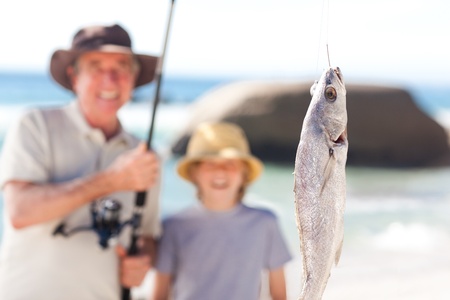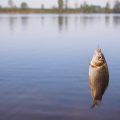1. Essential Fishing Gear for Indian Waters
When planning a family fishing trip across India, selecting the right equipment is crucial for a successful and safe adventure. The diversity of Indian waters—from the tranquil backwaters of Kerala to the powerful currents of the Ganges—demands a strategic approach to your gear. Start with robust fishing rods and reels designed to withstand both freshwater and brackish conditions. For local success, equip your tackle box with region-specific baits: earthworms for river catfish in North India, or dough balls and atta for catching rohu and carp in Central India. Don’t forget strong fishing lines capable of handling monsoon-swollen rivers, along with corrosion-resistant hooks that can endure humid environments.
Local Tackle Boxes & Accessories
Invest in a waterproof tackle box to keep your equipment organized and protected from sudden downpours—a common occurrence during the monsoon. Include essential accessories like pliers, extra sinkers, floats, and a measuring tape to comply with local catch regulations. For families venturing into remote locations, pack portable chairs and sun hats for comfort under the Indian sun.
Adaptability Is Key
Indian fishing spots often present unpredictable challenges. Equip yourself with rain gear, quick-dry clothing, and sturdy footwear for muddy banks or rocky riverbeds. Consider collapsible landing nets for easy transport on crowded trains or buses, and always have mosquito repellent handy when fishing near stagnant water bodies.
Respect Local Traditions
In many Indian communities, fishing is not just sport—it’s tradition. Choose eco-friendly gear where possible and respect regional customs regarding catch-and-release or species protection. By preparing with the right equipment tailored for Indian conditions, your family fishing trip will be memorable, comfortable, and culturally enriching.
2. Selecting Family-Friendly Fishing Locations in India
Choosing the right fishing spot is crucial for a memorable and safe family fishing trip in India. Our country is blessed with diverse aquatic landscapes, offering ideal locations for beginners and families seeking both relaxation and adventure.
Popular Family Fishing Destinations
| Location | Type of Waterbody | Key Features |
|---|---|---|
| Ganges River (Uttarakhand, Varanasi) | River | Sacred setting, vibrant local culture, plenty of fish species, easy access to ghats |
| Kerala Backwaters | Lagoons & Canals | Scenic houseboat stays, calm waters, abundant freshwater fish, perfect for family bonding |
| Pangong Lake (Ladakh) | Lake | Breathtaking scenery, serene atmosphere, cold-water fish varieties, unique experience for kids |
| Local Ponds (Across India) | Pond | Convenient locations, less crowded, ideal for beginners and children to learn fishing basics safely |
Why Location Matters for Families
- Safety: Choose spots with gentle banks and minimal currents to ensure childrens safety.
- Amenities: Look for areas with nearby washrooms, food stalls, and shaded spaces—vital for comfort during long hours outdoors.
- Cultural Experience: Many Indian fishing locations double as cultural hotspots—perfect for introducing your family to local traditions while enjoying nature.
Tips for a Hassle-Free Experience
- Contact local tourism offices or angling clubs (like the Angling Association of India) to confirm current fishing conditions and safety advisories.
- If you’re new to the area, consider hiring a local guide—they know the best child-friendly spots and can share fascinating stories about the region.
Selecting a scenic and secure destination ensures your family fishing trip is not just fun but also safe and culturally enriching—making memories that last a lifetime!

3. Indian Safety Checklist & Tips for Fishing Trips
Water Safety First: Protect Your Family
When planning a family fishing trip in India, safety is always the top priority, especially with children and elders in your group. Always choose well-known, less crowded water bodies such as government-recognised lakes or rivers. Avoid deep or fast-flowing waters, particularly during monsoon season. If fishing from a boat, ensure it is licensed and equipped with basic safety gear.
Life Jackets: Non-Negotiable for All Ages
No matter how confident you are around water, life jackets are a must-have for everyone—including adults! Make sure each family member has a properly fitted, BIS-certified life jacket. This small step can make all the difference in an emergency. Remember, in many Indian states, wearing a life jacket while boating is mandatory by law.
Sun Protection: Beat the Indian Heat
The sun can be unforgiving, especially between March and June. Pack wide-brimmed hats, UV-protective sunglasses, and high-SPF sunscreen (SPF 30+ recommended). Lightweight, full-sleeve clothing will protect your skin from both sunburn and insect bites. Encourage kids to hydrate frequently with clean water—carry plenty of bottled water for everyone.
Monsoon Considerations: Timing is Key
Monsoon brings not only heavy rains but also unpredictable river currents and slippery banks. Avoid fishing trips during peak monsoon months (June to September) unless you are experienced and conditions are safe. Always check local weather forecasts (IMD updates), and be ready to postpone your outing if there’s any risk of storms or flooding.
Snake & Insect Precautions: Stay Vigilant
Many popular fishing spots in India are home to snakes and insects like mosquitoes. Wear closed shoes and long trousers to reduce risk of bites. Carry a snakebite first-aid kit, antiseptic cream, and insect repellent. For rural or forested areas, inform someone local about your plans and carry a basic mobile phone for emergencies—network coverage may be patchy!
With these practical tips tailored for Indian families, your next angling adventure will be safe, enjoyable, and memorable for all age groups—from Nani to the youngest champ!
4. Packing Indian Snacks and Hydration Essentials
Any family fishing trip in India is incomplete without the right snacks and proper hydration, especially under the hot sun. Packing travel-friendly Indian munchies not only keeps spirits high but also adds a touch of home comfort to your outdoor adventure. Here’s how you can prepare a perfect snack-and-hydration kit for your fishing expedition.
Top Travel-Friendly Indian Snacks
| Snack | Description | Why it’s Ideal for Fishing Trips |
|---|---|---|
| Samosas | Crispy pastry stuffed with spicy potato or veg filling | Easy to pack, satisfying, and doesn’t spoil quickly |
| Parathas (Aloo/Gobi/Paneer) | Stuffed Indian flatbreads | Can be rolled up and eaten cold or warm, very filling |
| Namkeen Mixture | Spicy, crunchy savoury snack mix (sev, peanuts, etc.) | Lightweight, non-perishable, perfect for sharing |
| Thepla or Khakhra | Gujarati-style flatbreads/crisps | Long shelf life, great with pickle, mess-free eating |
| Laddoo/Chikki | Sweet treats made from jaggery & nuts or flour | Instant energy boost during long hours outdoors |
Chai Flasks & Beverages: The Desi Way to Stay Refreshed
No Indian family outing is complete without chai! Invest in a sturdy thermos flask that can keep masala chai or ginger tea hot for hours. For children or those who prefer cold drinks, consider carrying homemade nimbu paani (lemon water) or aam panna in insulated bottles.
Hydration Hacks for Long Hours Under the Sun
- Electrolyte Sachets: Pack a few ORS (oral rehydration salts) sachets—just mix with water if anyone feels dehydrated.
- Coconut Water: Carry ready-to-drink tetra packs of coconut water—nature’s own electrolyte drink!
- Reusable Bottles: Everyone should have their own leak-proof water bottle to avoid wastage and ensure steady hydration throughout the day.
- Avoid Sugary Sodas: Stick to healthy, natural drinks to keep energy up without the sugar crash.
- Add Mint & Tulsi Leaves: Drop fresh leaves into your water bottles for an extra cooling effect on hot days.
Packing Tips for Maximum Freshness & Convenience
- Use insulated lunch boxes or cooler bags for perishable items like samosas and parathas.
- Pre-cut fruits like watermelon or mangoes in airtight containers for a refreshing treat.
- Avoid snacks that crumble easily or get soggy; dry snacks work best for long journeys.
- Carry enough napkins, wet wipes, and small garbage bags for easy clean-up after snacking.
- If you’re fishing near a local village, consider picking up fresh pakoras or bhajiyas from roadside stalls for that authentic experience!
Packing well-chosen Indian snacks and being smart about hydration ensures your family stays energised and focused on the fun of fishing. With the right food and drinks in tow, your angling adventure becomes a memorable picnic by the water!
5. Eco-Friendly & Culturally Respectful Fishing Etiquette
Responsible Angling: Protecting India’s Rivers and Lakes
Fishing with your family in India is not just about the thrill of the catch—it’s about preserving our precious water bodies for future generations. Always follow responsible angling practices by using only what you need, releasing undersized or endangered species, and avoiding overfishing in popular spots like the Ganges, Brahmaputra, or Kerala backwaters.
Respect for Local Traditions & Beliefs
India’s rivers are more than natural resources—they are sacred to millions. When fishing near temples, ghats, or during local festivals, observe traditional customs. Avoid loud noises, never pollute holy sites, and always seek permission from local communities or authorities before casting your line. A respectful approach will earn you warm welcomes and unforgettable memories.
Keep It Clean: Carry Jute Bags & Minimise Plastic
Show respect for nature by carrying reusable jute bags instead of plastic to collect any litter you generate. Dispose of waste responsibly—never leave packaging, fishing lines, or hooks behind as they can harm wildlife and pollute the environment. If possible, volunteer to join local clean-up drives or encourage your children to pick up litter along the banks.
Eco-Conscious Gear Choices
Opt for biodegradable bait and non-toxic weights to reduce your environmental impact. If you’re using live bait, ensure it’s sourced locally to prevent introducing invasive species into Indian waters. Support local artisans by purchasing handcrafted bamboo rods or eco-friendly tackle boxes that reflect regional craftsmanship and reduce reliance on imported plastics.
Involve the Family: Teach Respect for Nature
Make eco-friendly fishing a family value. Teach children to gently release fish they don’t intend to eat and explain why protecting aquatic habitats matters. Share stories about river goddesses like Ganga Maa to connect cultural heritage with environmental stewardship.
Together for a Greener Tomorrow
By blending responsible fishing practices with Indian traditions and eco-conscious choices, your family trip becomes more than an adventure—it becomes a lesson in sustainability and respect for India’s vibrant natural and cultural legacy.
6. Fun Activities & Games for Kids During Breaks
Creative Ways to Keep Young Anglers Engaged
Family fishing trips in India are not just about the thrill of catching fish—they’re about creating unforgettable memories with your loved ones. While waiting for the next big catch, it’s important to keep children entertained and involved. Here are some engaging activities that blend Indian culture with riverside fun:
Spotting Local Birds and Wildlife
India’s riversides are teeming with vibrant birdlife and curious creatures. Encourage kids to observe kingfishers, egrets, or even playful monkeys nearby. Bring a pair of binoculars and a simple bird guidebook in English or Hindi, and turn wildlife spotting into a friendly competition—who can identify the most species during your break?
Riverside Cricket Matches
No Indian outing is complete without cricket! Pack a lightweight bat and tennis ball. The riverside sandbanks make an exciting pitch for quick matches. Divide into teams—adults vs. kids or mixed groups—and enjoy a few overs between casts. This classic Indian game brings everyone together and adds sporty energy to the fishing day.
Traditional Indian Games
Introduce children to simple, traditional games like Kabaddi, Pittu (Seven Stones), or Lagori. These require minimal equipment—a few stones, a small ball, or just open space. Teach the rules if it’s their first time; these games build teamwork, agility, and connection to Indian heritage while you wait for fish to bite.
Storytelling & Riddles
Sit under a shady tree and share folk tales from your region, or challenge each other with Hindi riddles (paheliyan). Storytelling brings generations together, passing on family traditions and keeping spirits high throughout the trip.
By weaving in these fun activities during breaks, you ensure that every moment at the riverside remains lively and meaningful for your family—making your fishing trip in India truly unforgettable!


